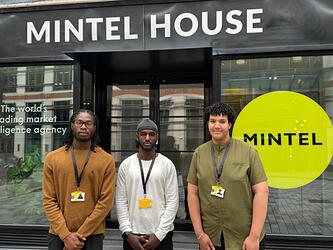Collective perspective
Knowing how staff feel about the organisation for which they work – what it’s good at and what it needs to work on – is, one would assume, paramount for good business and employment practices.
Which is why most larger businesses run regular surveys. After several years specialising in employee insight, however, these surveys and their findings left Michael Silverman thinking they were a waste of time. Too quantitative and numeric, they didn’t contain enough qualitative or open-ended questions to gain useful insight.
A psychologist by training, Silverman worked in academia before moving into research at Ipsos Mori and, then, into client research as head of employee insight at Unilever.
“Other areas of research were moving on and doing cool things, but even in a company like Unilever – where it is up to the minute with consumer insight – its employee research wasn’t,” says Silverman. “I had this conflict that I was working in an area that I disliked.”
This led him to set up his own business, Silverman Research, and to design the research tool Crowdoscope. It draws on collective intelligence to gain better insight into employees, although the research can be applied to groups outside of a workplace context. Collective intelligence allows people to interconnect, and build discussions and understanding, as they emerge from groups.
“The results of a staff survey lack interaction between people in terms of rating each other’s ideas, suggestions and opinions. They feed up the information and someone else decides what’s important. It’s a closed-loop system. [With Crowdoscope], the information feeds back to participants, which changes the output in a way that you wouldn’t get with a survey,” says Silverman.
But is there a danger this collective interaction could feed a neurosis or put weight on otherwise less important areas? “Hopefully, it’d be the opposite,” says Silverman. “It would help to identify things that are important that would have been missed in a survey. By reading other people’s comments, someone may change their opinion, or understand the diversity of opinion and shift. That’s one of the outputs – greater understanding of participants.”
To avoid people being affected by what their boss says, Crowdoscope anonymises users. “Everyone has an equal chance of being heard. That’s how the algorithms are designed. You can be assured you receive the same amount of attention as other people.”
The research tool still opens with a few box-ticking questions, but offers more qualitative insight when people write comments, which are then rated by others.
“It’s how you analyse the two alongside each other; you’re not just interested in what people are talking about – you’re interested in how those topics and ideas are rated. You can say, so many people were talking about this and this is how the community feels about it,” Silverman explains.
The data visualisation groups people based on a simple multiple-choice question – such as age, location, or agreeing or disagreeing with a particular question. In an employee context, a popular way to group people is by business unit or function. “Organisations are often quite siloed, so it can be nice to read comments from people who work in a different area,” Silverman says. “The trick is organising the groupings in a way that is helpful and relevant to the open-ended question you’re asking.”
Unilever has used Crowdoscope to explore inclusivity in the business and Silverman thinks it’s particularly good for that type of research. “Diversity and inclusion go hand in hand with giving people a voice, and Crowdoscope gives people an open forum. It’s transparent and honest; if someone does have a problem, it’s not hiding it behind closed doors. Lots of companies do the research, but then they try to gloss over it.”

We hope you enjoyed this article.
Research Live is published by MRS.
The Market Research Society (MRS) exists to promote and protect the research sector, showcasing how research delivers impact for businesses and government.
Members of MRS enjoy many benefits including tailoured policy guidance, discounts on training and conferences, and access to member-only content.
For example, there's an archive of winning case studies from over a decade of MRS Awards.
Find out more about the benefits of joining MRS here.













0 Comments